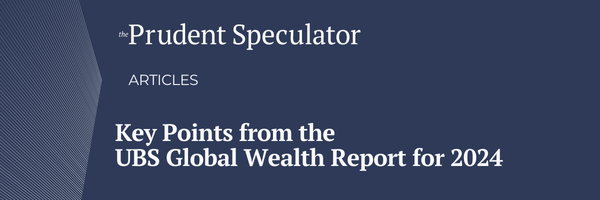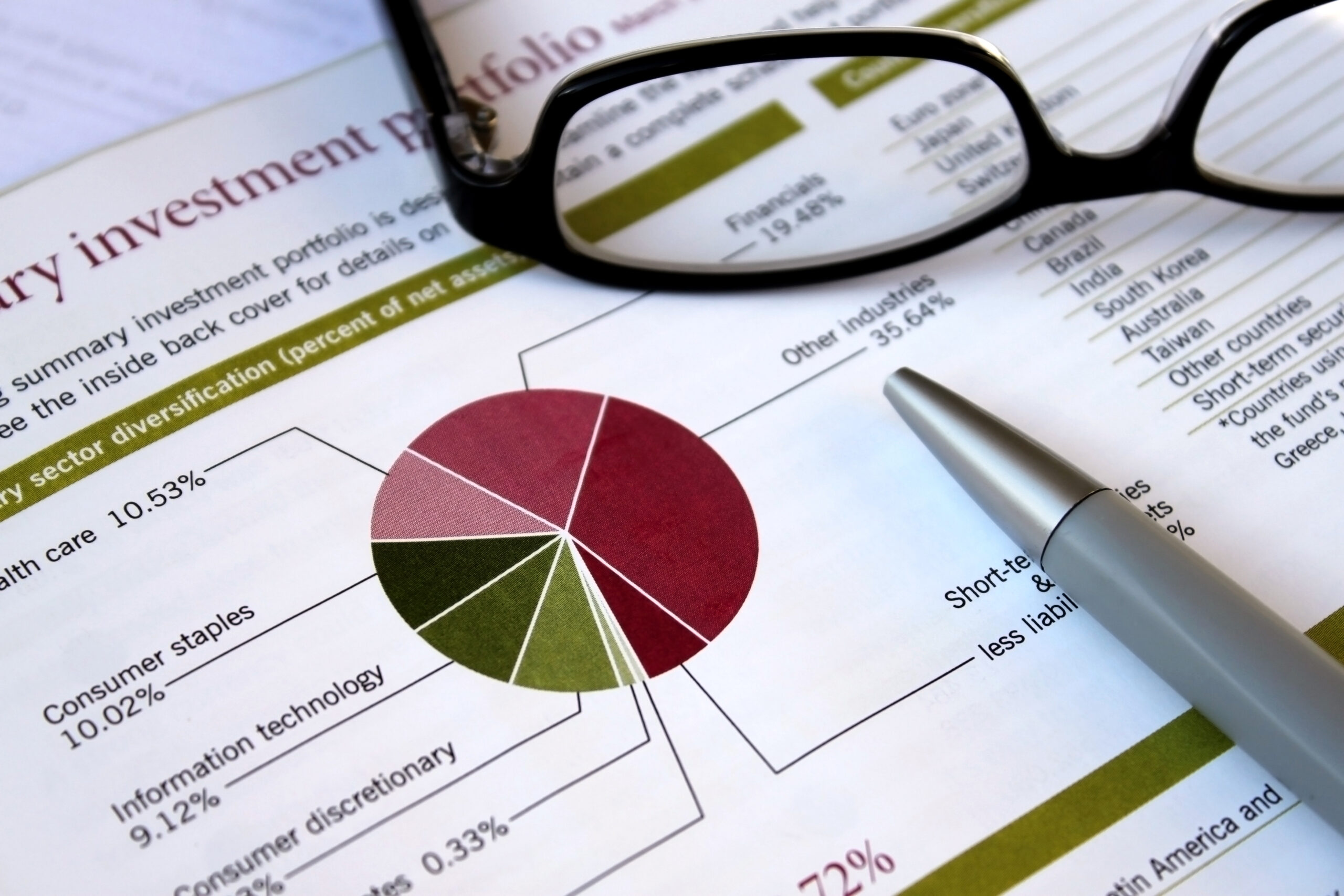Our Morningstar 5-Star Supernovas Special Report, a review of Morningstar ratings, is available in Adobe pdf format by clicking here.
Warren Buffett states, “In the business world, the rearview mirror is always clearer than the windshield.” And even though investors are constantly bombarded with the standard compliance warning that past performance is no guarantee of future performance, it should come as no surprise that many can’t help but chase the hottest asset class, sector or stock, often to their financial detriment.
And, illustrating the propensity to zig when zag would have been better, the same goes in the mutual fund realm as billions of dollars poured into the fund managed by Ken Heebner after he was dubbed America’s Hottest Investor by Fortune Magazine in May 2008 and into the fund Bruce Berkowitz manages after he was named Morningstar’s Fund Manager of the Decade in early 2010. After all, both managers had top-rated (5 Stars) funds by Morningstar, given that each had enjoyed phenomenal performance. Alas, the key word is had as returns in the years since they were the toast of Wall Street have been very disappointing, to say the least, so much so that Morningstar now rates Heebner’s fund as 1 Star and Berkowitz’s fund as 2 Stars.
A 5-Star Contrarian Indicator
To be sure, not all top performers so quickly and dramatically lose their touch, but our study of Star ratings and subsequent performance since 1994 shows that on average investors are actually better off using Morningstar ratings as a contrarian indicator, particularly over the longer time horizons. In Figure 1, we chart the growth of $100 invested by Star rating. The 5-Star average actually outperforms the others for the full study period, but the outperformance is entirely attributable to the Tech Bubble. Were we to start the chart in 2000, the growth of $100 at the end of 2020 for 5-Star funds would be $398, while 1-Star funds would have grown to $530.
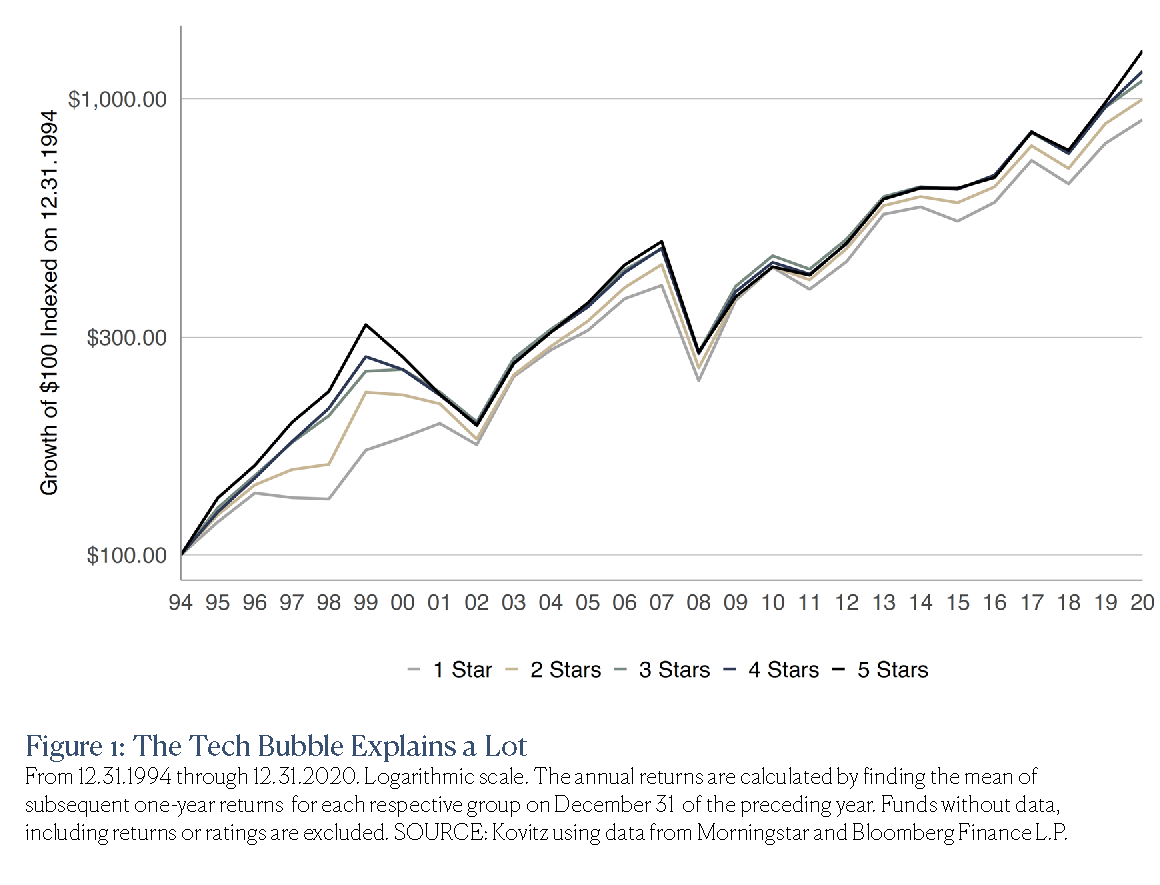
While we are looking at the numbers on an annual basis, and we accept that not all funds remained in business so as to have a forward return for the ensuing three and five years, the results in Figures 2 and 3 are staggering as the analyses show that the best-performing funds on a trailing basis, on average, produced among the worst returns going forward…and vice versa!
Now, that might not be so awful if investors simply stayed put in their funds, taking the good with the bad and ignoring the Star ratings, but history shows this not to be the case, despite what Don Phillips wrote in 2010. In Star Wars, the Sequel, the Managing Director of Morningstar said, “The Morningstar Rating for funds is a grade on past performance. Period. No one at Morningstar ever claimed that the Stars have predictive power or ever ran an ad telling investors to follow the Stars to riches.”
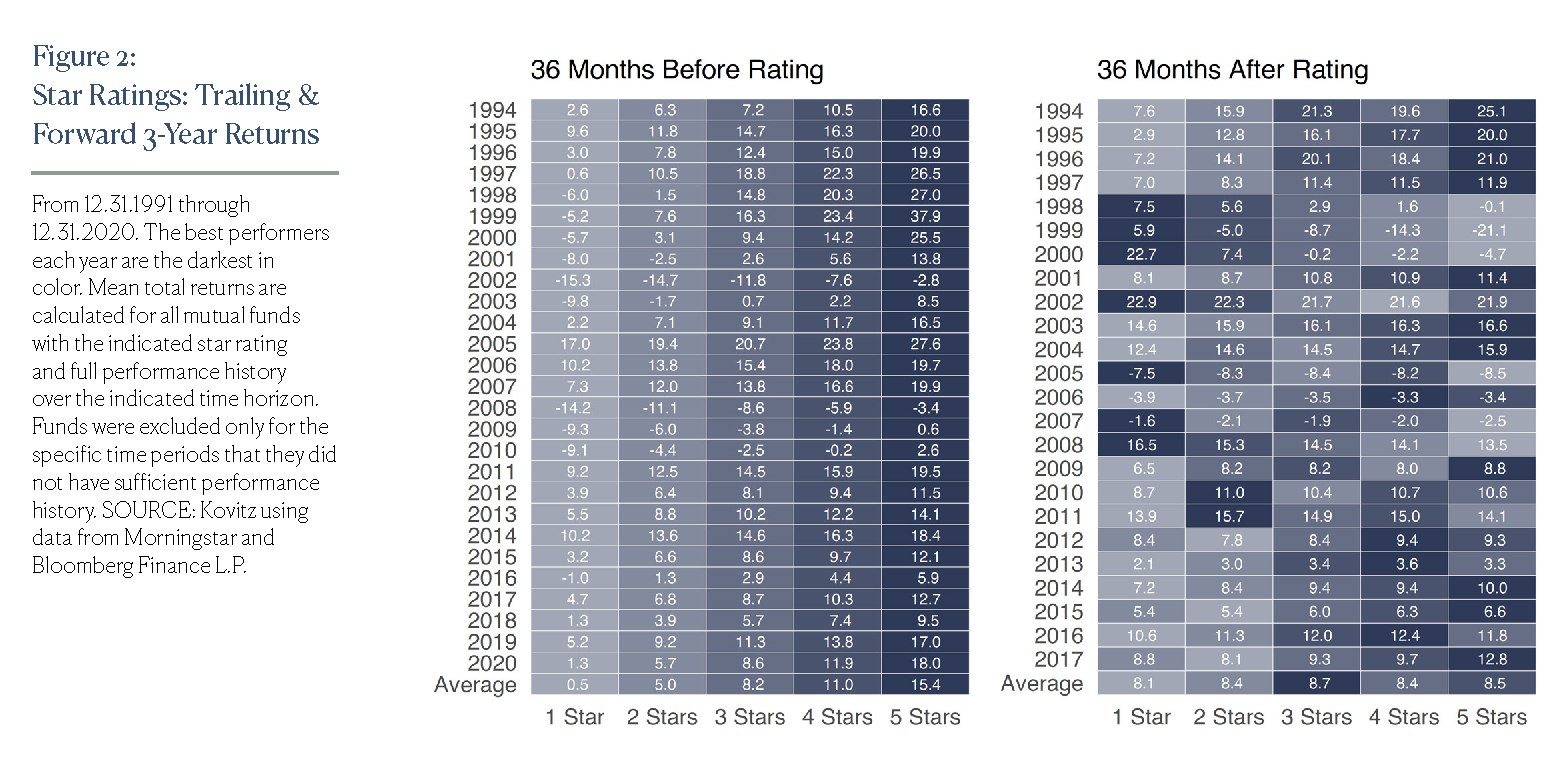
That may be true, but fund companies spend a ton of advertising dollars promoting their highly ranked products, with the marketing efforts obviously bearing plenty of fruit.
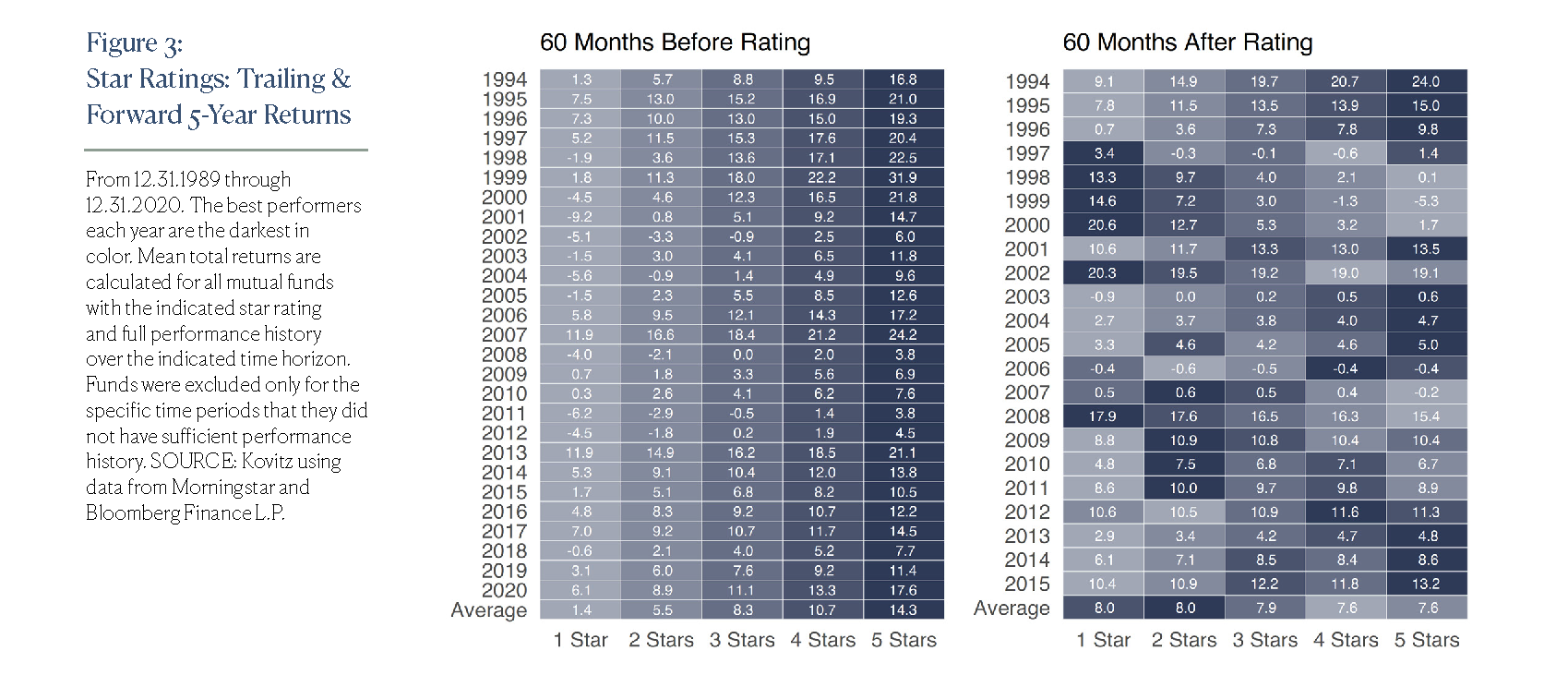
In Figure 4, we chart cumulative fund net asset value for all funds that had a Morningstar rating and asset data in Bloomberg, and it shows that dollars have actually flowed out of 1- and 2-Star U.S. equity funds, while funds with 4 and 5 Stars have experienced massive asset growth without the accompanying explosive performance that earned them those high ratings.
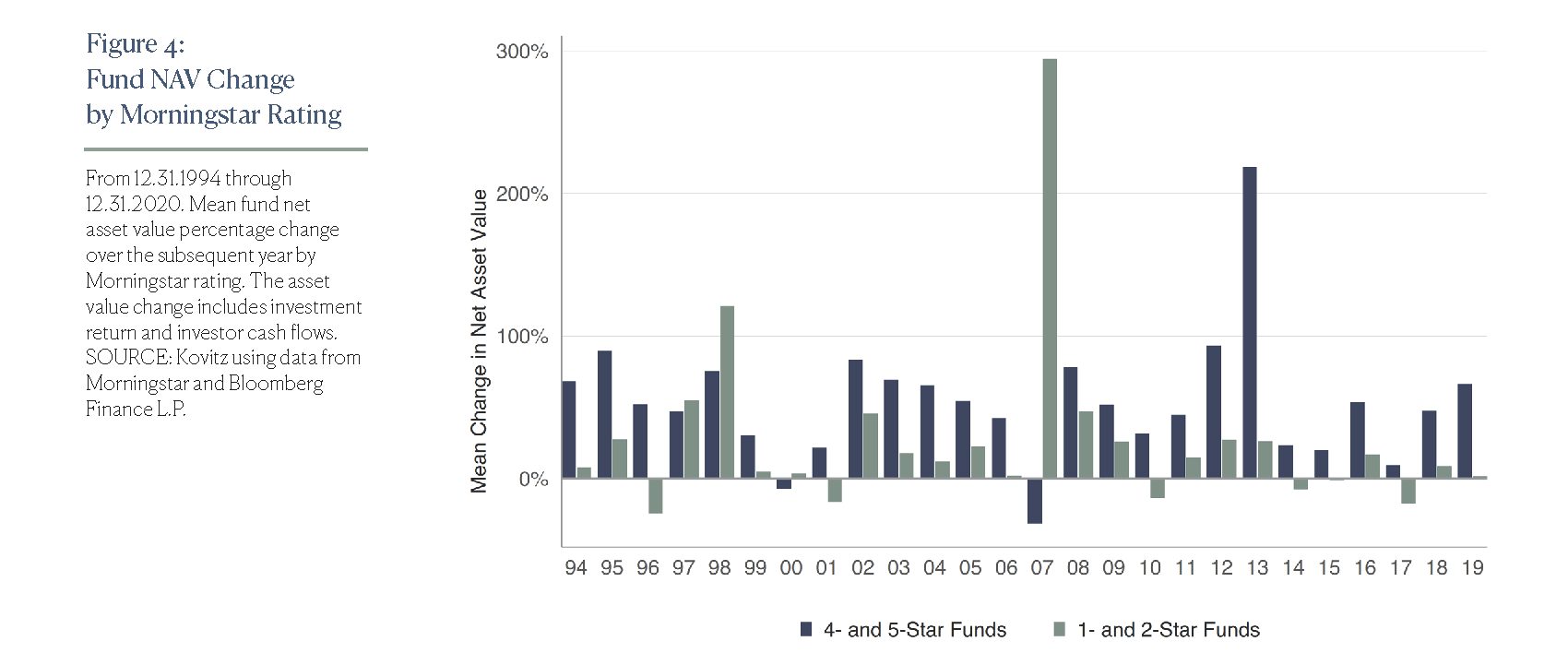
If You Don’t Change Direction, You Might End Up Where You Are Heading
Sadly, many lack a solid financial plan, or do not have the benefit of working with an investment professional, so the weaker longer-term performance of 4- and 5-Star funds is compounded by an inability to stick with whichever funds they hold for enough time to reap the rewards of long-term ownership. Whether Morningstar or other factors deserve the blame, investors have proved to be lousy timers with their mutual fund purchases and sales.
Such was the conclusions reached by two studies: (1) Hsu, Jason C. and Myers, Brett W. and Whitby, Ryan J., Timing Poorly: A Guide to Generating Poor Returns While Investing in Successful Strategies—Dollar Weighted Return in Equity Funds of 6.87% per year from 1991-2013, compared to a Buy & Hold Return of 8.81% per annum; (2) Morningstar—Asset Weighted Return for U.S. Equity Funds of 6.52% per annum for the 10 years ended December 2013, against an 8.18% Average Return.
And, lest folks think that getting the timing right is easier today than when the data for those studies were compiled, DALBAR Inc.’s 2021 Quantitative Analysis of Investor Behavior argues that equity fund timers have had even less success over the last 3, 5 and 10 years, with the returns gap widening as compared to longer-term time spans. What’s more, if timing equity market movements is difficult, the gyrations of the bond market have led to even uglier returns for fixed income timers, given the miserable average bond investor figures. In fact, DALBAR found that bond investors panicked in March 2020, bailing from bond funds at the rate of 5% of assets during the COVID-19-fueled financial market upheaval. Incredibly, the average fixed income investor return came in at a loss of 4.51% that month, compared to a drop of 0.59% for the Bloomberg Barclays Aggregate Bond index.
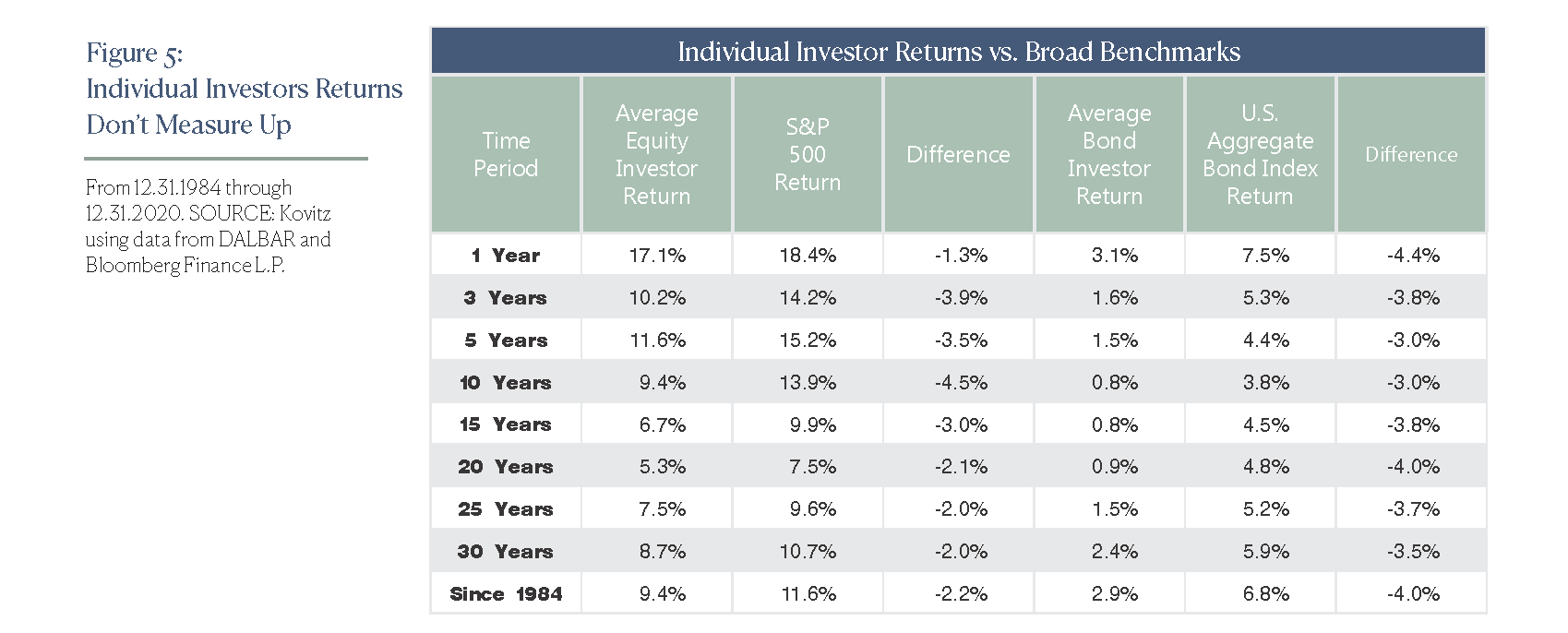
Conclusion
The above in mind, we think the best advice is to have professional guidance rather than going it alone. We offer our clients a wide portfolio of investment options paired with an experienced team of Financial Advisors, which allows allocation decisions to be tailored for individual situations, taking into account factors like time horizon, risk-taking ability and personal goals.
Learn More:
We frequently publish investment-oriented content on our Blog and reach thousands of subscribers through our weekly Market Commentary and monthly Newsletter. Please click here for subscription information.
For more details about our wealth management and asset management services, kindly fill out this Contact Us form and we’ll reach out to you shortly.


